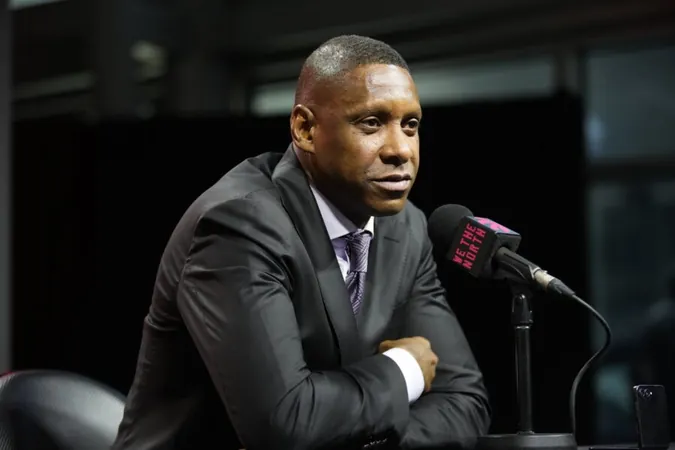
Canada's Bold Move: PM Carney Pledges Major Defense Spending Boost and Less U.S. Dependency
2025-06-09
Author: Sophie
A New Era in Canadian Defense Policy
In a significant shift for Canada, Prime Minister Mark Carney has announced an ambitious plan to drastically increase defense spending, aiming to hit NATO’s target of 2% of GDP five years ahead of schedule. Addressing the pressing need for a strong military presence in an increasingly treacherous world, Carney emphasized that Canada can no longer afford to rely heavily on the United States for its defense.
Breaking Away from the U.S. Shadow
During his speech at the University of Toronto, Carney warned that the era of viewing Canada’s geographic location as a shield is outdated. He pointed to global tensions such as Russia’s invasion of Ukraine and China's rising assertiveness, underlining that Canada faces imminent security threats. In light of this, the Prime Minister committed to funneling billions into local defense industries, reinforcing a vision of self-sufficiency.
A Commitment to NATO and Domestic Industry
As Canada prepares to host the G7 summit next week, defense spending is set to take center stage. With NATO's upcoming summit focusing on strengthening military capabilities, Secretary General Mark Rutte has already suggested aiming for a core defense spending increase to 3.5%. Carney's commitment comes as a response to heightened pressure from NATO allies and concerns over Canada’s aging military infrastructure.
Challenges Within the Ranks
Despite these ambitious plans, Carney’s remarks reveal serious limitations within Canada’s military. "Only one of our four submarines is seaworthy," he stated, revealing that less than half of the country's maritime and land fleets are fully operational. This acknowledgment of deficiencies raises questions about the feasibility of Carney's outlined defense strategies.
Navigating U.S. Relations and Military Procurement
The Prime Minister's speech also highlighted the complexities of U.S.-Canada relations, particularly following the Trump administration's protectionist policies. Accusations of the U.S. monetizing its hegemony complicate Canada’s procurement strategies, especially with discussions surrounding the controversial $85 million purchase of F-35 stealth fighters from Lockheed Martin.
Political Will Amidst Pressure
Experts like Timothy Sayle from the University of Toronto warn that Carney faces the daunting task of balancing independent action with the realities of longstanding U.S. defense partnerships. With Canada pushing for a $85 million deal for 16 F-35 jets, the debate over diversifying procurement channels has never been more critical.
Future Implications of Defense Spending
As Carney summons the political will to drive this massive investment, questions loom regarding funding sources and potential tax implications for Canadian citizens. Yet the growing consensus within the country suggests a pressing need for swift action to bolster Canada’s defense capabilities and ensure sovereignty in a fluctuating global landscape.
The Road Ahead for Canadian Defense
In conclusion, this bold plan marks a pivotal moment for Canada’s military future. The Prime Minister’s vision includes a firm commitment to prioritize domestic manufacturing and national security, signaling Canada’s intent to stand resiliently on its own in a world increasingly fraught with dangers.









 Brasil (PT)
Brasil (PT)
 Canada (EN)
Canada (EN)
 Chile (ES)
Chile (ES)
 Česko (CS)
Česko (CS)
 대한민국 (KO)
대한민국 (KO)
 España (ES)
España (ES)
 France (FR)
France (FR)
 Hong Kong (EN)
Hong Kong (EN)
 Italia (IT)
Italia (IT)
 日本 (JA)
日本 (JA)
 Magyarország (HU)
Magyarország (HU)
 Norge (NO)
Norge (NO)
 Polska (PL)
Polska (PL)
 Schweiz (DE)
Schweiz (DE)
 Singapore (EN)
Singapore (EN)
 Sverige (SV)
Sverige (SV)
 Suomi (FI)
Suomi (FI)
 Türkiye (TR)
Türkiye (TR)
 الإمارات العربية المتحدة (AR)
الإمارات العربية المتحدة (AR)